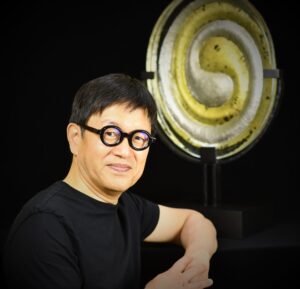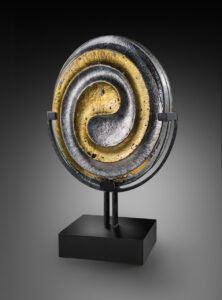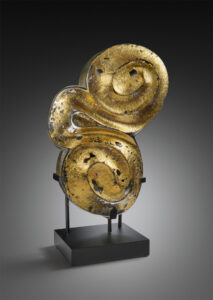Tell us about yourself.
My main priority as an artist is to achieve a balance between the artist and the work itself. By this I mean that the artist has a limited role in realizing his creation; he strives to give shape to the raw materials only up to a certain point. After that, the materials respond on their own, guiding the artist’s vision. In this way, man and nature coexist in the resulting creation.
Another equally important goal is to challenge and subvert established aesthetic standards and values. Examples of such standards are good or bad, beautiful or ugly, comfortable or uncomfortable, Western or Eastern, etc. Transcending these categories gives the work of art a youthful, childlike freshness and originality not bound by convention. I ask the viewer to view the work with the pure gaze of a child, in order to see it more truthfully.
I usually try to attain this childlike perspective at the very beginning of the creative process. This allows me to free the work from its conceptual boundaries, rendering it more universal. Such universality is now more important than ever; technology has broken down physical and cultural barriers. I would like my art to reflect this globalization, and persuade people to find unity in diversity, the simple in the complex.
I now use molten glass, gold and platinum foils in my art, beginning with a certain conception, and then allowing the materials to mold the art into the finished product. I also strive for universal shapes and forms. During the creation of a piece, I imagine myself on the plane of the materials, as an equal to them. I admit and accept the nature of the materials, which result in spontaneously changing patterns of melted gold or platinum foils on highly heated molten glass.
What draws you to the material you work with?
Characteristics of glass such as fragility, fluidity, and transparency vividly express the human way of life.
What themes do you pursue in your work, and why have you chosen the processes that you use in your work?
I pursue in my work the concept of “dependent co-arising” in Buddhism, which entails no distinction between human beings and other living creatures, or even inanimate objects. There is no attempt to conquer others or dominate nature. Instead, a harmony with all things is attained.
It is my hope that my work will instill in the viewer this sense of harmony, and inspire a reconsideration of what relationship human beings have to each other and their environment.
What is your dream project?
I don’t have a specific project, but I have a dream of continuing my artistic activities for the next 30 years.
What is something about you that most people don’t know?
Why are you a member of GAS?
I joined because I liked the free spirit of GAS.




